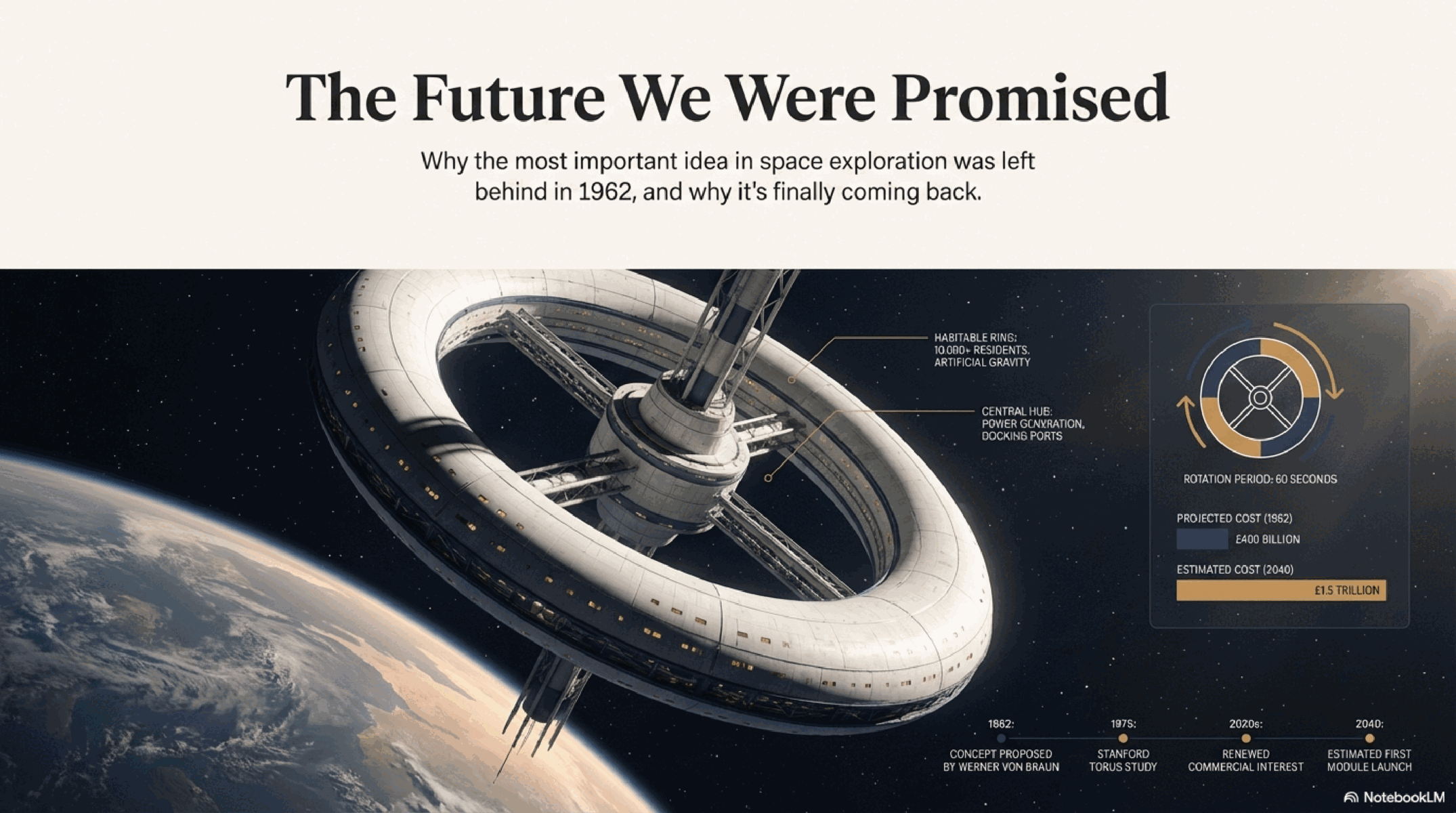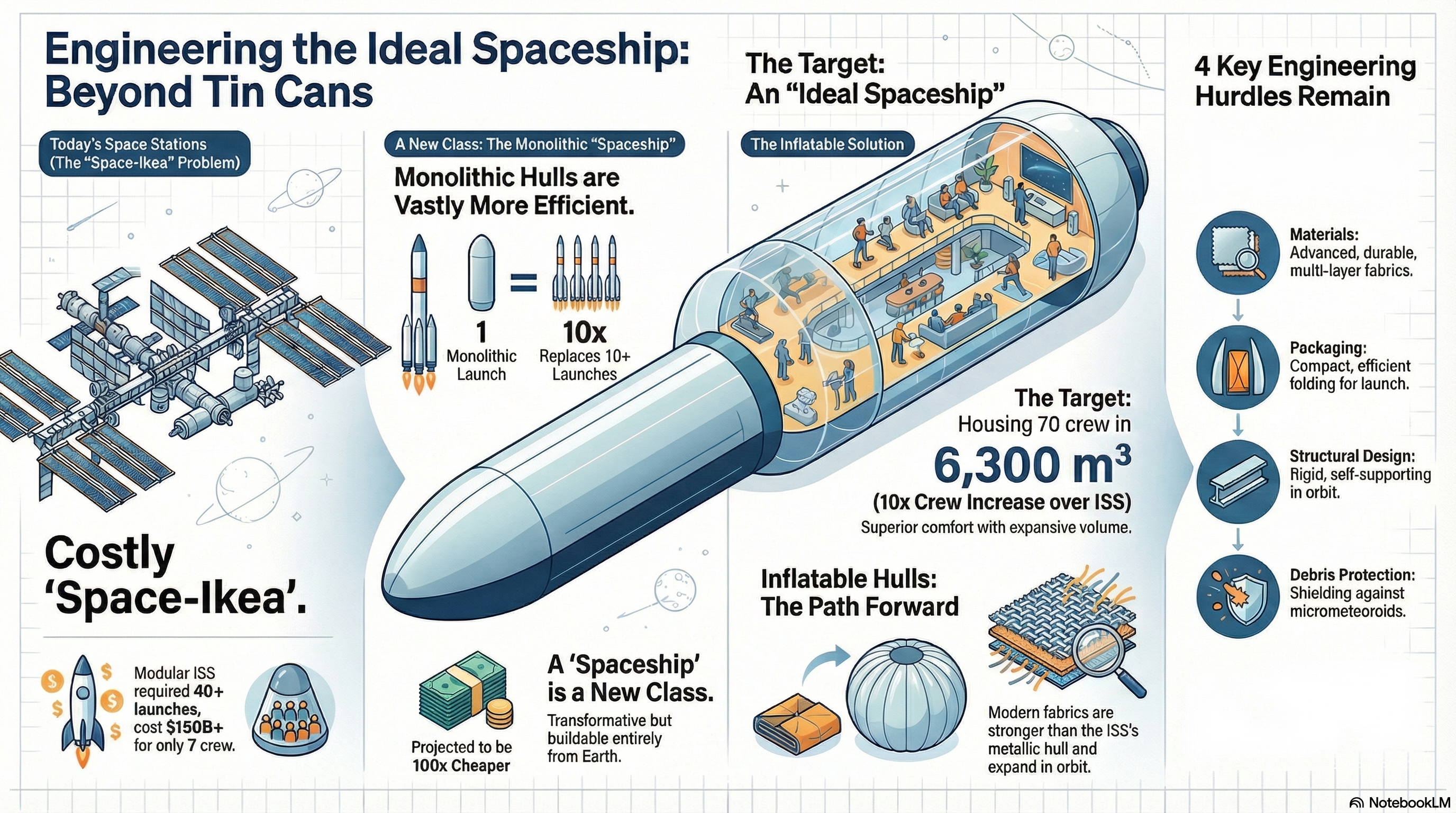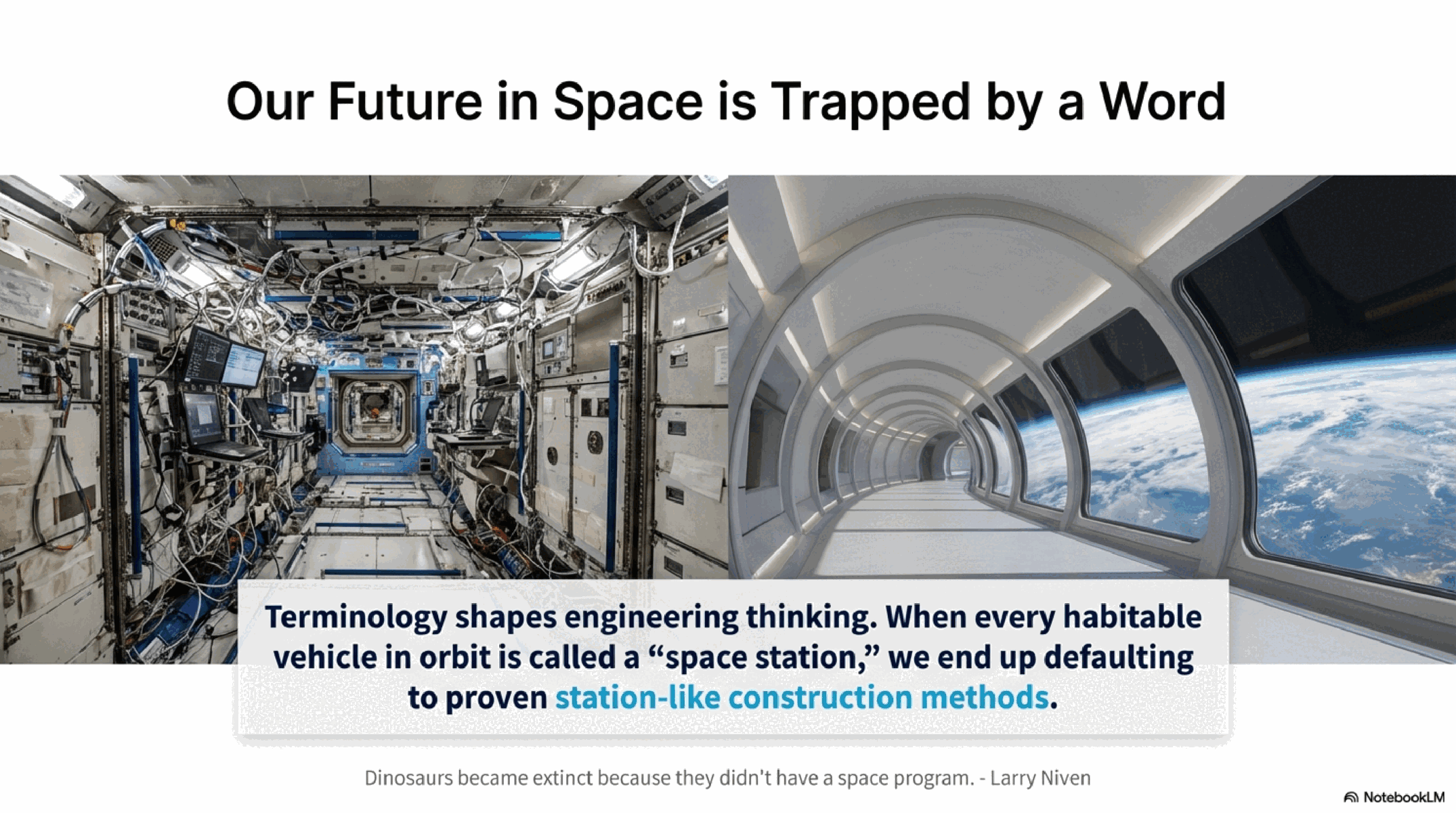Nano Banana-pilled, Nano Banana-shilled for Spaceship Engineering
I have written several blogposts surveying various aspects of space station development. These were written to have bite-sized documentation1 on the in-space assembly of the ISS; this also serves as a primer for final-year undergraduate studentsI teach space engineering things at Queen Mary University of London (QMUL). working on their final-year Space Station Design Project under my guidance2.
Most of these posts are quite hastily written and therefore unpolished but certain other articles are much more fully formed multi-thousand word pieces. These I consider more important. A first piece surveys pre-Apollo research at NASA on von Braun wheelsMore commonly known as rotating wheel space stations. and answers why we never got them3—the folks at Works in Progress (WiP) were kind enough to publish a much revised version of this article in their magazine recently—whereas another longer piece argues for the need for a field of spaceship engineering.
Initial Impressions of Nano Banana
The publication of the WiP piece coincided with Nano Banana Pro’s release. I’d seen some impressive images from Anders Sandberg from one of his papers on Dyson spheres.
OK, color me officially impressed: Nano Banana Pro can make good diagrams based on papers. This one can go straight into my presentations. pic.twitter.com/lXtGouNrXh
— Anders Sandberg (@anderssandberg) November 22, 2025
I applauded the result but wasn’t too fussed to actually produce one of these infographics for myself. Not until I saw that the NotebookLM team had replied to a Sam Bowman tweet with a cute gif of the WiP piece. Here it is:
Glad to hear it! Open to feedback anytime.
— Ani Mohan (@ani_c_mohan) November 22, 2025
Been a longtime fan of @stripepress and @WorksInProgMag by the way, I enjoyed making this one.
If you'd ever be interested in working together (we work with publishers via Featured Notebooks for now) please reach out! pic.twitter.com/dlDlAFgQdQ
Without examining the accuracy of it, I remained impressed with the overall presentation. I’d go so far as to say it is even pretty spectacular with its imagery. I wouldn’t have produced that even in a week or a month, I suppose—not with that quality of imagery.
Sadly, Twitter now makes it a pain to download gifs so I was unable to save a local copy of the above gif. So, I decided to pop into NotebookLM for maybe the second time ever to see if I could produce one of my own. It was so easy that I ended up producing two.
Google, colour me impressed.
Testing with my writing
This shit is slick. I just dropped the URL of the WiP piece into the chat box and was presented with a summary of the article; the studio panel on the right side has many options. I decided I’d produce an infographic and a slide deck; roughly ten or so minutes later, both were ready to go and my results are below:

And here is the gif of the slide deck:

I’m still impressed for what I suspect are limitations of the free-tier usage of NotebookLM.
I then fed my What is a spaceship? essay into NotebookLM, requesting the same outputs.


I have not fact-checked these but I have some impressions on the quality of these slides nonetheless.
Remarks
In both cases, the quality of my slides appears (marginally) lower than those in Ani Mohan’s tweet; he has a far cooler cover image, for one, but I also really like his slides’ usage of serif fontsMaybe that is a prompting thing? and that some of the text in his slides is overlaid on an image; in my case, they are all blocky and separate from the image. When I think of it, I want to say that this is actually just an incredibly cool thing for me to gripe about—I am literally complaining about the style of something I would never be able to visualise on my own or with my students unless we spent several weeks working on it. Of course, this is a superficial assessment and I still need to fact-check against my own workWhich, in the case of the blogpost, also needs to be double-checked, if I am being totally honest!; but this tool, like most things AI, can only trend towards being better.
From a teaching perspective, I can only imagine how much more engaging my teaching slide decks could look to my students—if I ever get around to making them. The issue here is that I’ve spent a couple years tuning things to perfection and making minor modifications; having to go through all the slides again to double-check that all the math was faithfully reproduced by NotebookLM is going to be a bit of a ball-ache that I don’t look forward to.
I think Sam’s assessment is spot-on in his main tweet that apps will stop mattering if an AI can produce such high-quality stuff on demand.
The bottom line is I am just really, really impressed with the results.
-
I had previously read up on this several years ago but have lost all my digestible short notes on it. This is a good reason for having blogging in my workflow. I should definitely have started earlier! ↩
-
I permit a broader focus than purely space station development because students should have some creative freedom to pursue what they like—it has led to some cooler projects on space debris mitigation, for example. ↩
-
Developing this piece is one of the reasons this site came into existence. There was no real home for me to present this idea publicly but also the scraps of notes from earlier also needed to live in the same space. I am a bit reluctant to use Substack because of the feed; if my students are going to read things, it’s better to direct them to my (quite less distracting and therefore boring) website. ↩